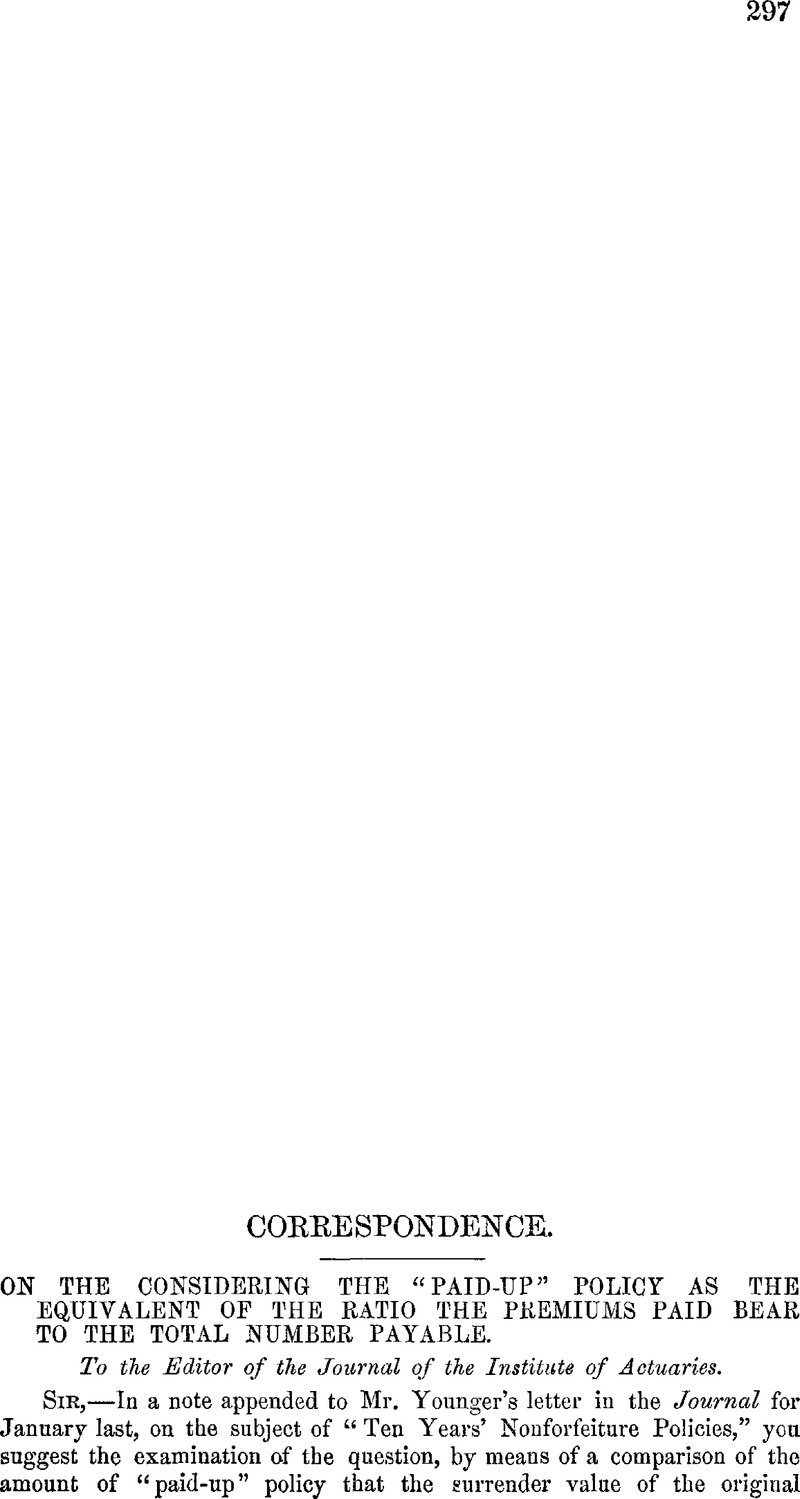No CrossRef data available.
Article contents
On Considering the ‘Paid-up’ Policy as the Equivalent of the Ratio the Premiums Bear to the Total Number Payable
Published online by Cambridge University Press: 18 August 2016
Abstract

- Type
- Correspondence
- Information
- Copyright
- Copyright © Institute and Faculty of Actuaries 1870
References
page 298 note * It may not be out of place to append here another proof of Mr. Sprague's formula. Using and ¶x and ¶x + t in the extended sense given to them above, and supposing ![]() to mean the annuity payable from age (x + t) on to the expiry of the time named in the original contract, as also employing A
x + t
to represent the single payment corresponding to the annual premium
to mean the annuity payable from age (x + t) on to the expiry of the time named in the original contract, as also employing A
x + t
to represent the single payment corresponding to the annual premium ![]() the amount of “paid-up” policy.
the amount of “paid-up” policy.
Divide both numerator and denominator by ![]() , and we have
, and we have

But ![]() , and
, and ![]() , therefore
, therefore ![]()
![]() policy. Q.E.D.
policy. Q.E.D.
page 300 note * The empirical method does not necessarily give greater result than the true ones, so we are quite entitled to suppose a case accordingly. Thus, ![]() represents the difference of the amounts by the two methods at end of one year; or
represents the difference of the amounts by the two methods at end of one year; or ![]() the difference.
the difference.
Now V
x|l
is a maximum when the current risk is a minimum. Say, then, lx
=l
x+1. In which case ![]() , and
, and ![]() , and the expression will become
, and the expression will become ![]() , or
, or ![]() . But
. But ![]() . ∴ our expression is
. ∴ our expression is ![]() , or
, or ![]() . Now [except in the case when
. Now [except in the case when ![]() , or i = 0] n is greather than
, or i = 0] n is greather than ![]() . Therefore, when the mortality is a minimum, the amount of paid-up policy at the end of one year, by the true method, will be greater than by the empirical method. Q. E. D.
. Therefore, when the mortality is a minimum, the amount of paid-up policy at the end of one year, by the true method, will be greater than by the empirical method. Q. E. D.
page 301 note * Should the full value of policy not be allowed, but say, ![]() of it be deducted, and if some addition be made to the single payment, say,
of it be deducted, and if some addition be made to the single payment, say, ![]() of it, then the amount of paid-up policy to be given would be
of it, then the amount of paid-up policy to be given would be  .
.


